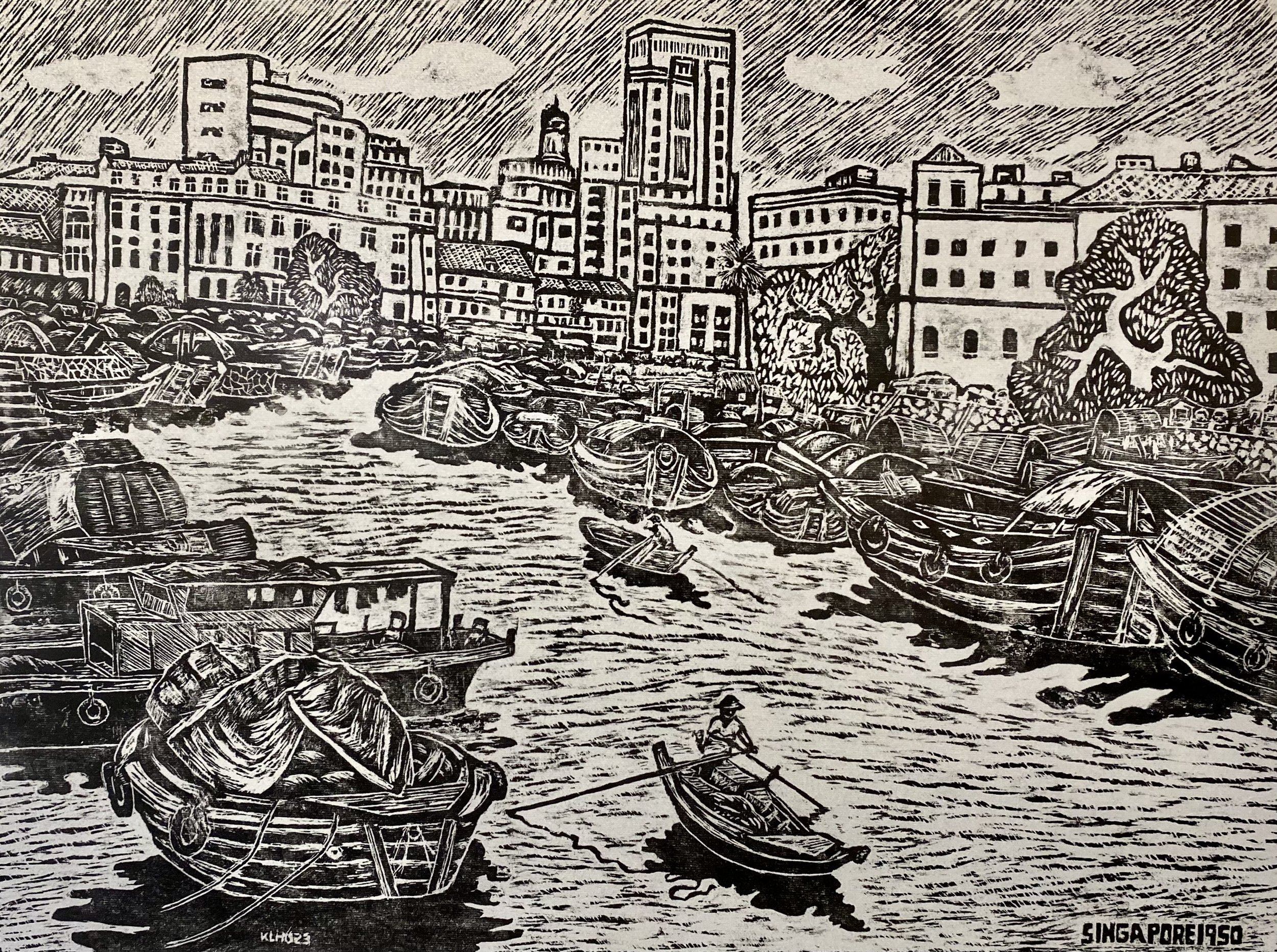
About The Artist
Dr. Ho Kah Leong (b. 1937) is a celebrated veteran artist and art educator in Singapore. He has been active in the local art scene for more than six decades and is now the Honorary Adviser to the Singapore Arts Federation. He was trained at NAFA in the mid-1950s, and later graduated from Nanyang University in 1963, following which he became a teacher before entering politics as a Member of Parliament in 1966. Consistent and prolific, Ho favoured painting en plein air, a technique that captured the luminous effects of natural light on tropical landscapes and its atmosphere.
After retiring from politics in 1997, Ho returned to the academy, this time leading the school from his new position as Principal and in 2003, as the Executive Director of NAFA International. He left in 2005 and has since been a Senior Consultant at a media firm.
Dr Leong is known for his oil paintings as well as his Chinese calligraphy, both of which feature his distinct bold strokes. His works are still widely collected by government departments and private collectors. In 2001, Ho was conferred an Honorary Doctor of Philosophy in Arts by the Wisconsin International University, United States, in recognition of his contribution to politics and art.
Singapore 1950
By Dr Ho Kah Leong
Woodcut Print | Edition of 4/10 | 121cm x 84cm | Framed
Woodcut, one of the oldest forms of printmaking, starts with the artist carving an image on a block of wood. Once the full image is etched, the wooden surface is coated with ink and stamped onto a piece of paper, revealing a painting. The practice of woodcut prints as an artistic medium by our local artists could date back to the 1930s.
In recent years, Dr Ho rejuvenated his passion and love for woodcut prints after 50 years and launched a solo woodcut exhibition in 2018 titled “Passion Rejuvenated”. The exhibition contemplates on Dr Ho’s continued inquisitiveness and fondness for woodcut prints, and expresses his hopes for this art form to rediscover the recognition and importance that it once had.
Featuring portraits of artists, the plight of refugees and scenes of daily life, he chose to retain the classic style of black and white woodcut prints to highlight the vibrancy and distinctiveness of each print.
By Dr Ho Kah Leong
Woodcut Print | Edition of 4/10 | 121cm x 84cm | Framed
Woodcut, one of the oldest forms of printmaking, starts with the artist carving an image on a block of wood. Once the full image is etched, the wooden surface is coated with ink and stamped onto a piece of paper, revealing a painting. The practice of woodcut prints as an artistic medium by our local artists could date back to the 1930s.
In recent years, Dr Ho rejuvenated his passion and love for woodcut prints after 50 years and launched a solo woodcut exhibition in 2018 titled “Passion Rejuvenated”. The exhibition contemplates on Dr Ho’s continued inquisitiveness and fondness for woodcut prints, and expresses his hopes for this art form to rediscover the recognition and importance that it once had.
Featuring portraits of artists, the plight of refugees and scenes of daily life, he chose to retain the classic style of black and white woodcut prints to highlight the vibrancy and distinctiveness of each print.